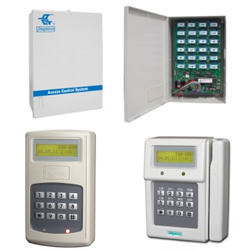Access control systems are physical or electronic systems which are designed to control who has access to a network. The simplest example of a physical access control system is a door which can be locked, limiting people to one side of the door or the other. Electronic access control systems typically control network security, limiting which users are allowed to use resources on a computer system, for example. Several security companies specialize in providing access control systems and supporting hardware and software for companies of all sizes.
In some cases, physical access control systems are integrated with electronic ones. For example, a door may be unlocked with a swipe card, an RFID keyfob, or through biometric means. A card access control system is one of the most common types of electronic door control, using a card with a magnetic stripe which can be swiped through a reader on the door. Hotels often use this system, which can be used to make temporary room keys. Laboratories and other facilities with areas requiring high security may also use a card control system, making the cards double as personnel identification.
Depending on the size of the organization and the varying levels of security which may be necessary, physical access control systems within a building may be linked or standardized, as is the case with a key which opens all of the doors in a building, or each access point may be controlled individually. The use of electronic systems allows an administrator to precisely define access privileges for each user and also instantly update them within the system, which is much more convenient than granting or revoking key privileges.
Network security is also important, especially in a company which handles sensitive data. Access control systems which span over computer networks are typically administered in a central location, with each user being given a unique identity. An administrator grants access privileges to personnel on a case by case basis, using settings within the administration software.
When installing access control systems, companies should consider who will use the system, and how it will be used. The larger the number of users, the higher the risk for a security business. In a situation where numerous users, including guests, are entering the area, tiered levels of security may be advisable. For example, a bank with a large staff and customer base will undoubtedly employ multiple access control systems to ensure that the public cannot reach the safe, unauthorized staff cannot reach the automatic teller machine, and so forth. On the other hand, a small business might be satisfied with a single key used to open all of the doors in the building, distributed to all employees. |

